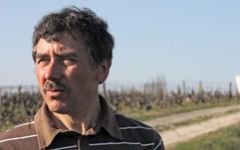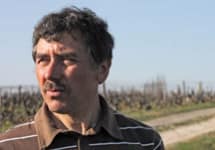Domaine Huet Petillant Vouvray 2014



Product Details
Your Rating
Somm Note
Winemaker Notes
All grapes harvested by hand. Noel Pinguet was one of the first French winemakers to adopt biodynamic viticulture and credit biodynamics with enhancing the personalities of the estate's terroirs.


Today, Domaine Huet may be making its most consistently great wines. As was one of the earliest adopters of biodynamic practices, and with years of experience working with the appellation's greatest terroirs, winemaker Jean-Bernard Berthome and his team are achieving a fascinating level of transparency, purity, and knife-edged balance in the wines.

Representing the topmost expression of a Champagne house, a vintage Champagne is one made from the produce of a single, superior harvest year. Vintage Champagnes account for a mere 5% of total Champagne production and are produced about three times in a decade. Champagne is typically made as a blend of multiple years in order to preserve the house style; these will have non-vintage, or simply, NV on the label. The term, "vintage," as it applies to all wine, simply means a single harvest year.

An important white wine appellation in the Touraine and one of the top in all of the Loire, Vouvray uniquely specializes in a wide range of styles from dry to sweet, and still to sparkling, each with its own definitive character. Vouvray is almost always 100% Chenin blanc (however up to 5% Menu Pineau is theoretically allowed but not often used).
Vouvray is also the name of a pretty little town just east of Tours on the northern bank of the Loire—its vineyards surround it to the northeast. Houses and cellars are carved out of the local tuffeau, a chalky or sandy, fine-grained limestone. Vineyards inhabit clay and gravel topsoil over tuffeau on the plateau, the best of which have a slight slope with a southerly aspect.
Chenin blanc’s high acidity and natural adaptability allow it to produce a wide range of styles with enormous success. Styles under the Vouvray name include sparkling, both Brut and Demi-Sec and still: Sec (dry) and Tendre (off-dry) as well as Demi-Sec (noticeably sweet), Moelleux (very sweet) and Liquoreaux (botrytized). Most can age about five years but the best quality versions will continue to improve over decades.
